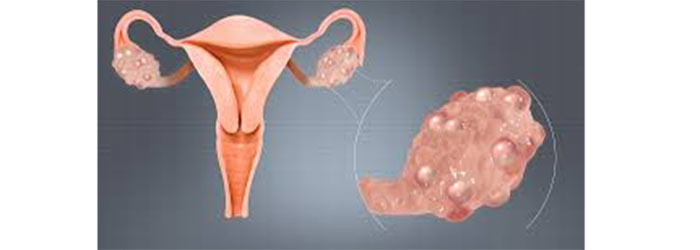Migraine headache and can Acupuncture help

Acupuncture and herbs for Stress and anxiety
January 23, 2024What is Migraine Headache
In large survey in united states 17.1% of women and 5.6% of men reported of having Migraine headache. Migraine is caused by Dilation and inflammation of cephalic arteries and intracranial extra cerebral arteries cause the migraine headache. The migraine-associated symptoms result from the activation of the sympathetic nervous system caused by the pain.
Type of Migraine:
- Migraine with Auara: affects one out three migraine patients, visual symptoms such as blind spots or flashing lights, numbness and tingling, muscle weakness, dizziness and imbalance. It can happen on their own or before a migraine attack. Auara happen gradually and can last from 5 min to one hour. In some patient aura does affect speech and orientation and in rate case fainting might occur.
- Migraine without Auara: the most common type of migraine headaches, Attacks of migraine without aura usually last between four hours and three days, if they are not treated or if the treatment is not effective. The frequency of these attacks varies. They could happen every few years or several times a week.
- Chronic migraine: is defined as having headache on at least 15 days per month, with eight of these having migraine symptoms, for at least three months. Other associated symptoms are increased sensitivity to light and sound, nausea and vomiting. Other symptoms include aura (such as visual disturbances, problems with speech, numbness or pins and needles), dizziness and vertigo (a sensation of spinning).
- Vestibula migraine: Migraine headache along with dizziness, vertigo and balance problems along with other more typical symptoms such as nausea, vomiting, sensitivity to light and sound.
- Menstrual migraine: Migraine which is associated with menstrual cycle, usually starting before menstruation and continuing till end of menstruation. It will include other symptoms such as nausea/vomiting and light/sound sensitivity.
Most typical migraine headaches lasting from 4 to 72 hours, consisting of three parts. Typically there is a prelude (prodrome), varying from individual to individual often involving symptoms such as nausea, vomiting, diarrhea, vertigo, anxiety, cravings . Next, the migraine itself can last between 48 and 72 hours, usually with severe head pain, and may include an aura, where brain cells become hypersensitive and begin chemical changes in the brain, causing visual effects . Thirdly, postdrome follows, where sufferers have extreme exhaustion, possible brain fog or memory block.
Genetics and migraine:
The genetic research in migraine is very new and complex, recently a study determined Mutations in the CACNA1A, ATP1A2, SCN1A, and PRRT2 genes have been found to cause familial hemiplegic migraine. The first three genes provide instructions for making proteins that are involved in the transport of charged atoms (ions) across cell membranes. The movement of these ions is critical for normal signaling between nerve cells (neurons) in the brain and other parts of the nervous system. The function of the protein produced from the PRRT2 gene is unknown, although studies suggest it interacts with a protein that helps control signaling between neurons. It seems mutations in these genes play a role in common migraine.
Migraine triggers:
Changes in routine: travelling, change of sleep schedule in some people triggers migraine attack
Stress: Studies have shown that the neuronal and hormonal changes associated with stress and the perceived psychological stress response via HPA axis may have multiple relationship to migraine. Stress may provoke the new-onset of migraine, it may act as a risk factor for migraine attacks, it may amplify migraine disability and/or burden; and it may contribute to the development of chronic migraine.
Sleep: studies have shown there is a correlation between sleep disorder and migraine, improving sleep will lower the frequency and intensity of headaches. For some patients migraine attack occurs early morning between 4 am to 9 am, which is another correlation between circadian rhythm and sleep quality.
Alcohol: mainly red wine which is the trigger for 1/3 of migraine patients with and without aura. Alcohol provokes neurogenic inflammation in the trigeminovascular system, and vasodilatation of meningeal vessels through calcitonin gene-related peptide (CGRP) release from perivascular sensory nerve terminals.
Hormone: estrogen and migraine have a complex relationship, one path involves serotonin. Serotonin at optimal level is a vasoconstrictor, low level of estrogens result in decrease density of serotonin receptors and decline serotonin activity which result in vasodilation and migraine. Most studies show a low level of estrogen level can trigger migraine headache, this theory explains premenstrual, and post-menopausal migraine headache. Migraine headache during pregnancy is due to increase blood volume and vasodilation of blood vessels in pregnancy.
Environment: high altitude, changes in weather, flickering light, and loud sounds can trigger a migraine attack.
Computer use: sitting in front of computer in a in correct position for long periods of time can cause upper back and neck tension which in turn can trigger migraine headache. Some people are sensitive to computer lighting and anti-glare glasses can be helpful.
Food:
- Tyramine and histamine are two monoamines that need monoamine oxidase enzyme (MAO) for metabolism, for people who lack MAO enzyme, food containing tyramine and histamine can trigger migraines.
- MSG: a flavor enhancer added to Chinese food and process meats, there are inconsistent evidence if MSG trigger migraine headache; however, it would be beneficial to avoid foods high in MSG.
- Nitrates/Nitrites: found naturally in some foods and added as a food additive in processed meat and wine. Nitrates are converted to nitric oxide ( a vasodilator) in the body which explains why it triggers a migraine headache. Recent research by American gut association has shown some patients with dysbiosis have a higher level of certain bacteria in their gastrointestinal tract produce more nitric oxide from nitrate/nitrite containing food, and the same population have a higher occurrence of migraine headache.
- Aspartame: an artificial sweetener added to diet soda and other “sugar free” drinks, some studies have shown large consumption of Aspartame containing food for prolonged period of time can cause migraine headache.
- Dehydration: low intake of water can trigger migraine headache, studies have shown that optimal water intake can lowered the severity and frequency of migraine.
Medication overuse/rebound headache: excessive intake of pain medication for headache can itself trigger migraine headache. The risk of medication-overuse headache is greatest with narcotic and barbiturates.
Temporomandibular disorders (TMDs): are a group of more than 30 conditions that cause pain and dysfunction in the jaw joint and muscles that control jaw movement. Studies have shown patients with TMD have a higher risk of migraine attacks.
Blood sugar level and migraine:
Research shows a sudden drop or low blood glucose level (hypoglycemia) level can trigger or exacerbate migraine headache. Low glucose level is caused by fasting, skipping meals as well as poor diet. Carbohydrates are consists of three components starch, fiber and sugar.
Simple carbohydrates found in sugar, high fructose corn syrup, fructose and sucrose can cause a sudden increase in blood glucose level followed by a sharp drop which can trigger a migraine headache. Complex carbs found in fiber and starch mostly found in vegetables, legumes, and root vegetables are digested more slowly and release glucose into the blood stream more gradually.
Metabolic syndrome and migraine:
Research shows that The severity and impact of migraine headache attacks are higher in patients with insulin resistance than in those without insulin resistance.
Serotonin and migraine
Research has shown low levels of serotonin can release calcitonin gene-related peptide (CGRP) a vasodilator that can trigger migraine headache. Serotonin also improves insulin sensitivity and glucose metabolism preventing migraine headache .
Gut health and Migraine
The Vagus nerve plays a crucial role in gut/brain axis, it carries an extensive range of signals from digestive system to the brain and vice versa. The gut microbiota can affect the immune system directly via activation of the Vagus nerve, in turn triggering bidirectional communication with the central nervous system. In addition, indirect effects of the gut microbiota on the innate immune system can result in alterations in the circulating levels of pro- and anti-inflammatory cytokines that directly affect brain function. Studies have shown gut dysbiosis causes local and systematic inflammation which can contribute to migraine headaches as well as depression, anxiety, Alzheimer and Parkinson’s disease. Intestinal dysbiosis can cause and over growth of H. Pylori which seems to have a direct correlation with migraine headache.
Recent research by American gut association has shown some patients with dysbiosis have a higher level of certain bacteria in their gastrointestinal tract which produce more nitric oxide from nitrate/nitrite containing food, and the same population have a higher occurrence of migraine headache.
Acupuncture for Migraine Headache
Based on a systematic review of 22 clinical trials published in 2016, 59% of patient receiving regular acupuncture sessions experienced a 50% reduction in migraine headache frequency with the effect lasting up to 6 months.
Another study published in 2018 in journal of pain research used brain imaging to draw a positive correlation between acupuncture and brain metabolites, which identifies a possible mechanism for the impact of acupuncture on migraines and potentially indicates an effective way to measure the impact of acupuncture on other central nervous system (CNS) disorders.
The researchers in the study, which was conducted in Beijing, used proton magnetic resonance spectroscopy imaging (MRSI) to look at the levels of brain metabolites in regions of the brain associated with pain after five days of acupuncture treatments in patients suffering from migraines. The design of the study was interesting—45 subjects participated in the study and were broken into three groups: patients suffering from migraine without aura, patients suffering from cervicogenic headache, and a healthy control group of patients who didn’t suffer from headache. However, the cervicogenic group also acted as a type of control or “reference condition” by receiving acupuncture treatment for migraine—not for cervicogenic headache. The healthy control group received sham acupuncture at non-acupuncture points on the body. After five consecutive days of acupuncture treatment, the patients in the migraine without aura group reported a decrease in headache intensity. This decrease in pain level was backed up by significant increases in brain metabolite levels of N-acetylaspartate to creatine (NAA/Cr), particularly in the thalami regions of the brain—the part of the brain associated with the transmission of pain. Low levels of NAA are considered a potential contributor to the pain associated with migraines.
Research has also shown that acupuncture can help in the treatment of migraine by:
- Providing pain relief – by stimulating nerves located in muscles and other tissues, acupuncture leads to release of endorphins and other neurochumoral factors and changes the processing of pain in the brain and spinal cord (Zhao 2008, Zijlstra 2003, Pomeranz, 1987)
- Reducing inflammation – by promoting release of vascular and immunomodulatory factors (Kim 2008, Kavoussi 2007, Zijlstra 2003).
- Reducing the degree of cortical spreading depression (an electrical wave in the brain associated with migraine) and plasma levels of calcitonin gene-related peptide and substance P (both implicated in the pathophysiology of migraine) (Shi 2010).
- Modulating extracranial and intracranial blood flow (Park 2009).
- Affecting serotonin (5-hydroxytriptamine) levels in the brain (Zhong 2007). (Serotonin may be linked to the initiation of migraines; 5-HT agonists (triptans) are used against acute attacks).
- https://americanmigrainefoundation.org/resource-library/top-10-migraine-triggers-and-how-to-deal-with-them/
- https://my.clevelandclinic.org/health/diseases/5005-migraine-headaches
- https://www.cochranelibrary.com/cdsr/doi/10.1002/14651858.CD001218.pub3/abstract
- https://americanmigrainefoundation.org/resource-library/understanding-migraineacupuncture-and-migraine-finding-a-combination-that-sticks/
- https://www.dovepress.com/acupuncture-therapy-in-treating-migraine-results-of-a-magnetic-resonan-peer-reviewed-fulltext-article-JPR





